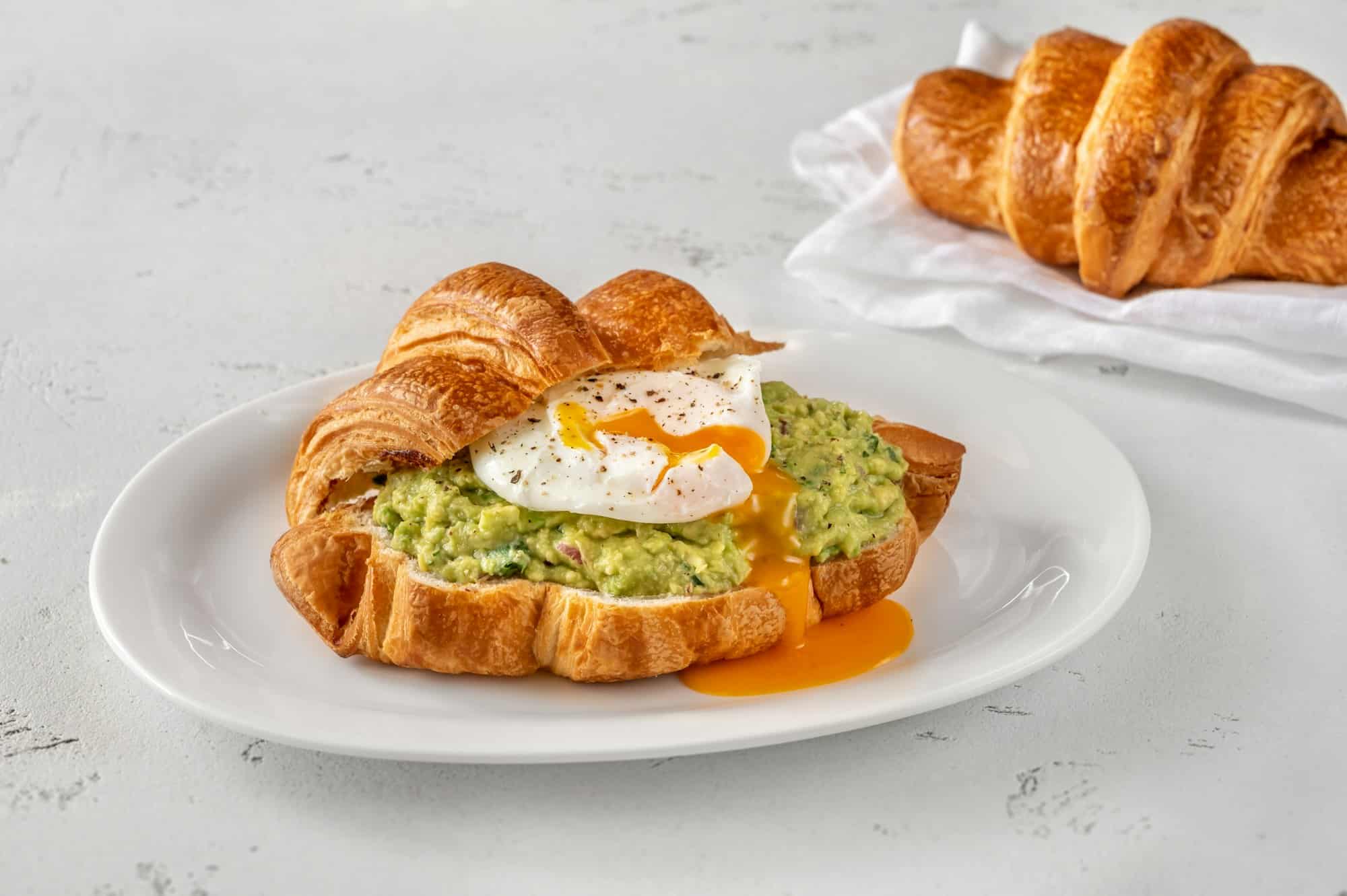What’s the Secret to a Perfectly Fluffy and Buttery Croissant?

Many of you might have wondered, while biting into a perfectly airy and buttery croissant, what the secret behind its fluffiness and richness is. The answer lies in patience, technique, and quality ingredients. A croissant, with its deep golden crust, tender interior, and layers upon layers of buttery goodness, is a testament to the baker’s art.
The journey to a perfect croissant lies in its making, from the right choice of flour and butter to the art of folding and rolling the dough, to the baking process itself. In this article, we will guide you through this fascinating process, sharing tips and tricks that will help you elevate your croissant game.
Also to read : What Techniques Can Ensure a Perfectly Silky Crème Anglaise?
The Foundation: Choosing the Right Ingredients
Before we delve into the complexities of making croissants, it’s essential to understand the importance of the ingredients. The quality and type of ingredients used can significantly impact the outcome of your croissants.
Flour is the backbone of your dough. It’s crucial to choose a strong flour with a high protein content to ensure the dough’s elasticity and ability to hold the butter layers. All-purpose flour or bread flour will do the job.
Also to read : How Can You Create a Refreshingly Tart Key Lime Pie with a Graham Cracker Crust?
Butter is responsible for the flakiness and richness of croissants. Always opt for high-quality unsalted butter, as it will provide the desired flavor and texture. The butter should be pliable, yet cold, when incorporated into the dough.
Yeast is a vital component that helps the dough rise. While you can use active dry yeast, many professional bakers prefer fresh yeast due to its superior leavening abilities.
The Process: Mixing, Folding, and Rolling the Dough
The process of mixing, folding, and rolling the dough is what creates the distinguishing layers in a croissant. Though time-consuming, this sequence of steps is crucial to achieving the genuine buttery and fluffy quality.
To start with, mix the yeast, flour, salt, sugar, and water into a dough and allow it to rest for a few minutes. Following this initial rest period, it’s time to incorporate the butter. This is done by placing a block of chilled butter on the dough and then folding and rolling it several times, akin to making puff pastry.
The process of folding and rolling the dough, known as laminating, is key to creating the multitudinous layers of a croissant. This should be done with great care, as too much handling can lead to the butter melting into the dough, thus compromising the flakiness of the croissant.
Cutting and Shaping Croissants
Cutting and shaping croissants is an art in itself. It’s what gives the croissant its characteristic crescent shape and ensures even baking.
To cut the dough, roll it into a rectangle of about quarter of an inch thick. Cut long triangles out of this rectangle, with the base measuring approximately three inches. The length of the triangles will determine the size of your croissants.
To shape the croissants, take a triangle and stretch it slightly. Start rolling from the base towards the apex. The tip should end up beneath the croissant to hold the shape during baking. Place the shaped croissants on a baking tray, ensuring there’s ample space between them for expansion during proofing and baking.
Proofing and Baking: The Final Steps
Proofing and baking are the final steps in making croissants and are crucial to achieving a perfect outcome.
For proofing, place the shaped croissants in a warm and humid environment to allow them to double in size. This will typically take a few hours. The proofing time is essential for the yeast to work its magic, creating those beautiful airy pockets inside the croissant.
Once proofed, the croissants are ready for baking. They should be baked in a preheated oven at a high temperature. The high heat will cause the water in the butter layers to evaporate quickly, giving rise to a rapidly rising and beautifully puffy croissant.
The key to a perfectly golden croissant lies in the baking time and temperature. It’s important not to rush the process – let the croissants bake until they’re a deep golden color. If the croissants are browning too fast, you can cover them with a piece of foil to prevent them from burning.
Baking croissants is indeed a labor of love. It takes patience and practice, but the end result – a batch of perfectly fluffy and buttery croissants – is well worth the effort. Happy baking!
The Art of Laminating: Layering Dough and Butter
The art of laminating, or layering dough butter, is at the heart of making croissants. This process, although demanding, gives croissants their flaky, buttery layers.
To laminate, you’ll need your dough, a butter block, and a rolling pin. Before starting, ensure the dough and butter are of similar consistencies. This will promote better integration of the butter into the dough while laminating.
Assembling for lamination begins by rolling out your dough on a lightly floured work surface into a rectangle about twice the size of your butter block. The butter block is then placed in the middle of the dough, and the dough is folded over the butter, completely enclosing it.
Next, you use your rolling pin to gently roll the dough-butter package, extending it lengthwise. The objective is to distribute the butter evenly within the dough without breaking it up. To fold dough, you need to bring the ends of the dough to the center and fold it again in half, like a book. After the first fold, cover the dough with plastic wrap and let it rest in the fridge for 30 minutes.
The folding and rolling process is repeated a few more times, with resting periods in between to keep the dough cold. This helps maintain the butter’s integrity, which is critical for the end result.
Remember, while making croissants, keeping everything cold is crucial. Warm temperatures can cause the butter to melt and absorb into the dough, leading to denser and less flaky croissants.
Gearing Up for Baking: Egg Wash and Baking Sheets
Once your croissants have been cut, shaped, and proofed, it’s time to prep them for baking.
Before placing your proofed croissants in the oven, apply a light coating of egg wash. This is a mixture of beaten egg and a splash of milk or water. The egg wash gives the croissants a shiny, golden-brown crust when baked.
As you get ready to bake, preheat your oven. While the oven heats up, line a baking sheet with parchment paper. Place your proofed and egg-washed croissants onto the baking sheet, leaving ample space between each to allow for expansion during baking.
Remember to monitor the temperature closely during baking. The heat must be high enough to create steam from the layers of butter and dough, which helps inflate the croissants. Yet, if it’s too high or the baking time too long, the croissants might burn.
Conclusion: The Reward of Making Homemade Croissants
Making croissants is a journey requiring patience, precision, and practice. While the process can seem daunting, the reward of biting into a perfectly flaky and rich homemade croissant is unparalleled.
From selecting high-quality flour and unsalted butter to mastering the folding and rolling process, each step plays a crucial role. Remember to let your dough rise at room temperature, and not to rush the baking process.
The key to successful croissant making is understanding the science behind it. Knowing how the ingredients interact and why certain techniques are used will make the process less intimidating and more enjoyable.
Next time you savor a deliciously buttery and fluffy croissant, you’ll appreciate the craftsmanship that goes into creating this pastry masterpiece. And with the knowledge and tips shared in this article, you’re well-equipped to try your hand at making your own batch of perfect croissants. Let the wonderful world of baking unfold!
